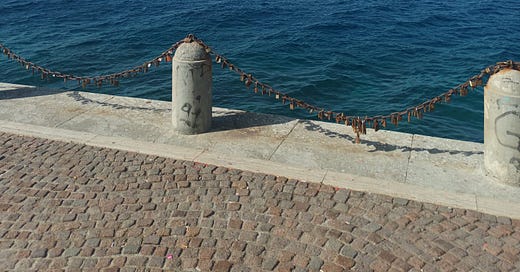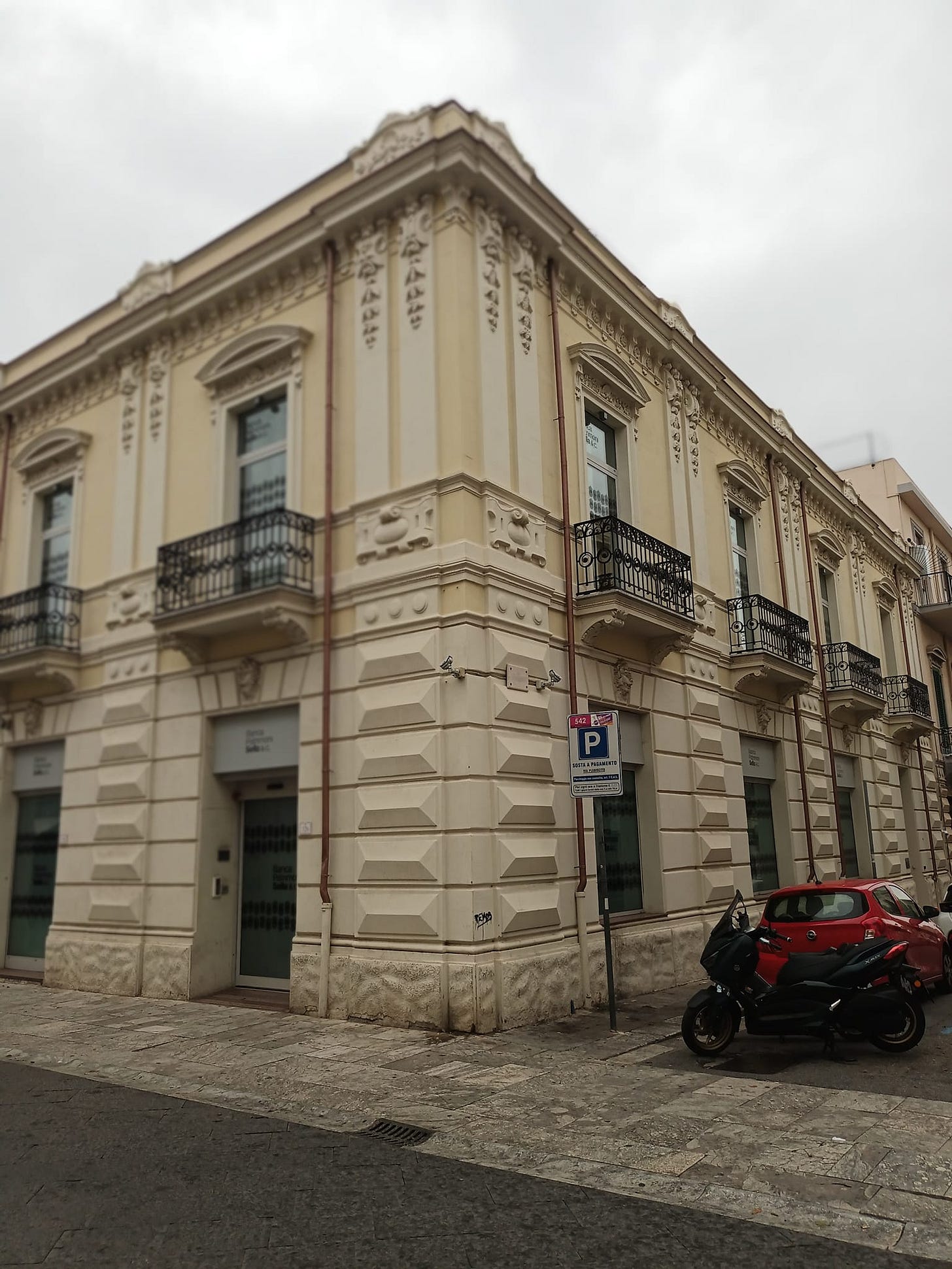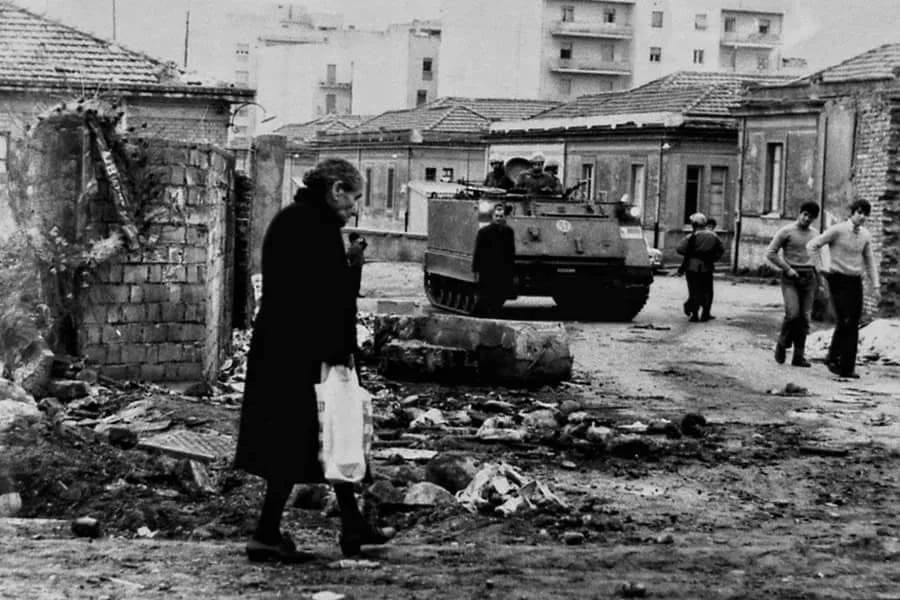From Reggio Calabria, the City that Has it All
Bronzes, Earthquakes, Tsunamis, Architectural Delights, Revolts, the 'Ndrangheta.
Greetings from Reggio di Calabria. I have come here to see the famous bronzes of Riace, and, if truth be told, to experience the atmosphere of a place supposedly dominated by the ‘Ndrangheta, the world’s most successful crime syndicate.
First, a little recent history. On the morning of 28 December 1908, at 5:21am, the sleeping town experienced an earthquake that lasted for 31 seconds. About 25,000 people perished, over a quarter of its population; those who were not killed in the earthquake itself died in the triple tsunami that followed ten minutes later. The 1908 Messina earthquake as it is usually called, for the effect on Messina across the Straits was even more catastrophic, remains one of the worst on record in modern western European history.
Like Messina, Reggio was swiftly rebuilt. Whereas Messina has some very fine modernistic buildings, Reggio is the place for lo stile Liberty, as Italians call Art Nouveau. The use of reinforced concrete meant that every building is decorated, some exuberantly so. The place is a delight for a twentieth century architecture freak such as myself.
Reggio is the only city of which the Italian Republic has lost control. It rose in revolt on 14 July 1970, and peace was only restored in February 1971. What sparked the revolt was central government’s decision to move the regional capital of Calabria from Reggio to Catanzaro. While central government has never been popular in places like Reggio, what happened was unprecedented. There were five days of street fighting in July; the railway line was blocked; a general strike was proclaimed. The government ordered a news blackout and the deployment of extra police. The rebels closed the port and the main north-south autostrada. National transport was paralysed. There were occupations of and attacks on public buildings, and a train bombing. Eventually the ringleaders were arrested, which caused fresh trouble, and armoured cars were seen on Reggio’s streets. The leaders were supposedly backed by the ‘Ndrangheta and Italy’s neo-fascist party, the Italian Social Movement.
It is worth remembering that in the 1970’s Italy was plagued by far left activism, bombings and kidnappings, coordinated by people like the Red Brigades and other tiny groups. But it was only the fascists who commanded a popular revolt, and that happened in Reggio.
The revolt worked. The government caved in on its decision to move the provincial capital, and the then Prime Minister, Emilio Colombo, decided to throw money at the problem, the so called Colombo package, which led to the construction of the port of Gioia Tauro. And we know how that turned out.
The next thing to happen to Reggio was the realisation that the place was a ‘Ndrangheta fiefdom and the dismissal of the entire local council on 9 October 2012. For the next 18 months the city was run by commissioners appointed by Rome, until local government could be restored. This too is unprecedented in modern Italian history.
Since then, it has all been simply wonderful, and people have talked of the city’s renaissance and a ‘Reggio Spring.’ True, there have been some very nice public works projects, particularly the development of the seafront, which is spectacular, but the ‘Ndrangheta which dominated the town now dominates much else besides. The real reason Reggio has come back to life is because the 'Ndrangheta no longer relies on extorting money from shopkeepers as they are too busy controlling the world’s drug trade which is centred on nearby Gioia Tauro.
Gioia Tauro works a little bit like Atlanta Airport, where you fly in and then fly out again as soon as you can. It is a hub. Containers arrive, are unloaded, and then put onto other ships and leave, what is called ‘throughput’. Gioia Tauro is thus the nodal point of the world’s drug trade. And why can’t the police stop it? Well, they do, but they only stop a small percentage of the drugs that go through. The reason - and this is guesswork - is because of the speed of transit through the port. Containers pass through extremely quickly, and the whole port works on the ability to shift goods with dispatch, using a computerised system to do so. It is the same with money-laundering: it’s hard to stamp out because the money moves around the world so swiftly. By the time you catch up with it, it has already gone.
But here I sit on my roof terrace and the cocaine-fuelled misery of the world seems far away. Here is a selfie. The building in the background is Reggio’s Cathedral.








Top man. Thank you 🙏. Excellent article. Do you know the works of Antonio Nicaso? Brilliant.
I'd never given any thought to this city. Now I'm intrigued!